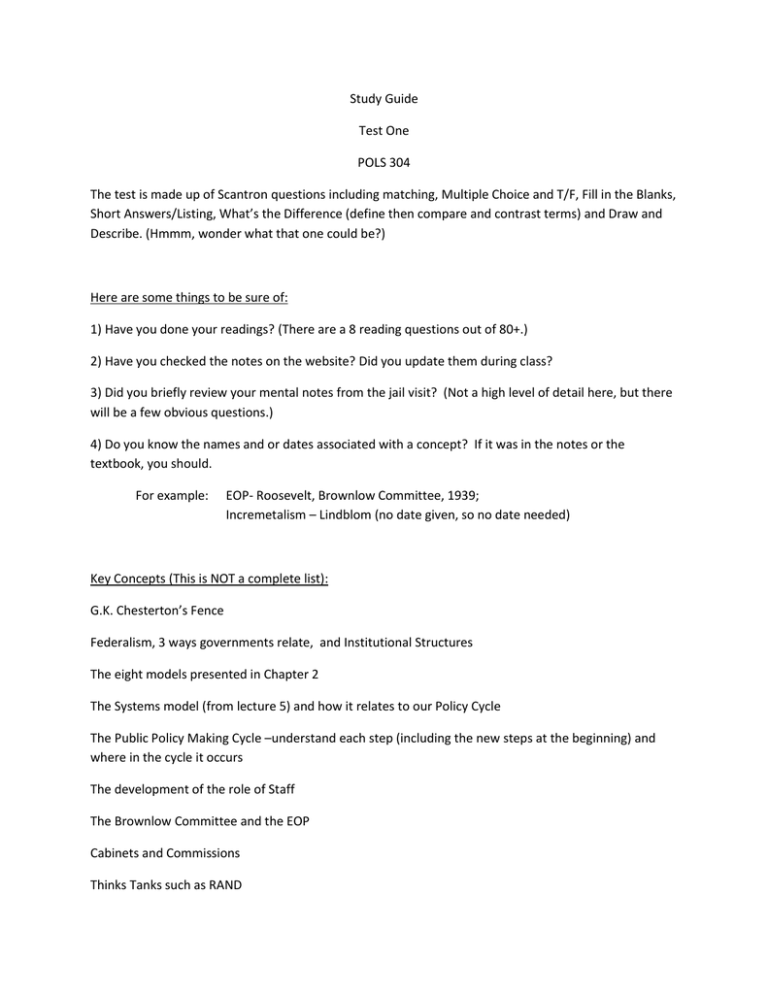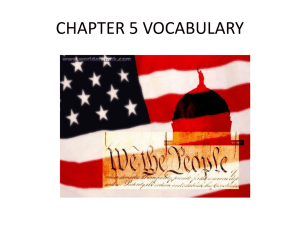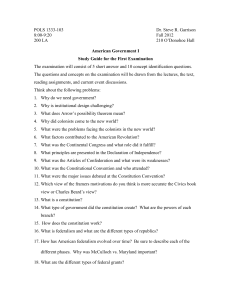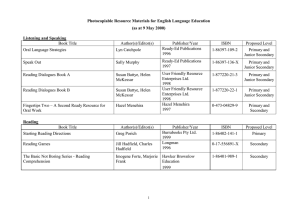Study Guide Test One POLS 304 The test is made up of Scantron
advertisement

Study Guide Test One POLS 304 The test is made up of Scantron questions including matching, Multiple Choice and T/F, Fill in the Blanks, Short Answers/Listing, What’s the Difference (define then compare and contrast terms) and Draw and Describe. (Hmmm, wonder what that one could be?) Here are some things to be sure of: 1) Have you done your readings? (There are a 8 reading questions out of 80+.) 2) Have you checked the notes on the website? Did you update them during class? 3) Did you briefly review your mental notes from the jail visit? (Not a high level of detail here, but there will be a few obvious questions.) 4) Do you know the names and or dates associated with a concept? If it was in the notes or the textbook, you should. For example: EOP- Roosevelt, Brownlow Committee, 1939; Incremetalism – Lindblom (no date given, so no date needed) Key Concepts (This is NOT a complete list): G.K. Chesterton’s Fence Federalism, 3 ways governments relate, and Institutional Structures The eight models presented in Chapter 2 The Systems model (from lecture 5) and how it relates to our Policy Cycle The Public Policy Making Cycle –understand each step (including the new steps at the beginning) and where in the cycle it occurs The development of the role of Staff The Brownlow Committee and the EOP Cabinets and Commissions Thinks Tanks such as RAND Crime Four Theories of Crime and Punishment Cesare Becarria Court decisions relating to Civil Liberties of the Accused –general knowledge, thumbnail sketch, importance of Justice Warren Violent Crime Rates/Victimization Rates and what impacts them Federalism Supremacy Clause (What is it, and where is it in the Constitution?) Reserved Powers (What does that mean, and where is it in the Constitution?) Unitary/Confederation/Federal System Pre-emption Mandate The McCulloch v Maryland case (And which components of the Constitution does it relate to?) The Gibbons v Ogden case (And which component of the Constitution does it relate to?) Welfare Poverty and welfare definitions Poverty Line Entitlements Prevention vs Alleviation AFDC and TANF; Welfare reform Medicare and Medicaid, plus SCHIP In-kind vs. Income assistance Social Security insures against








